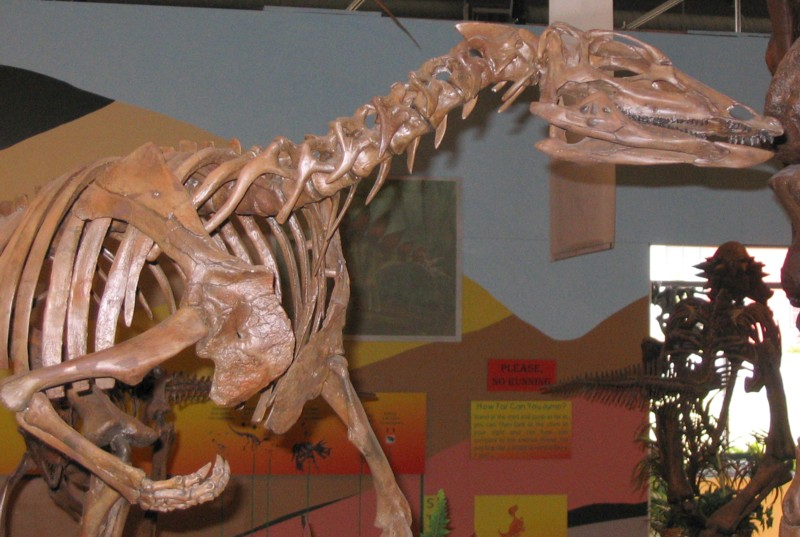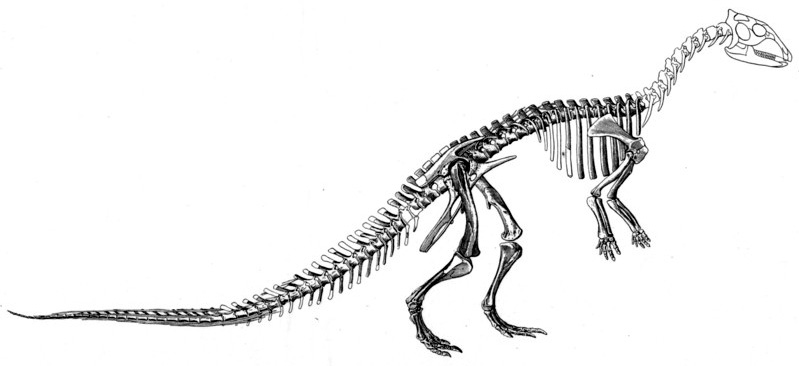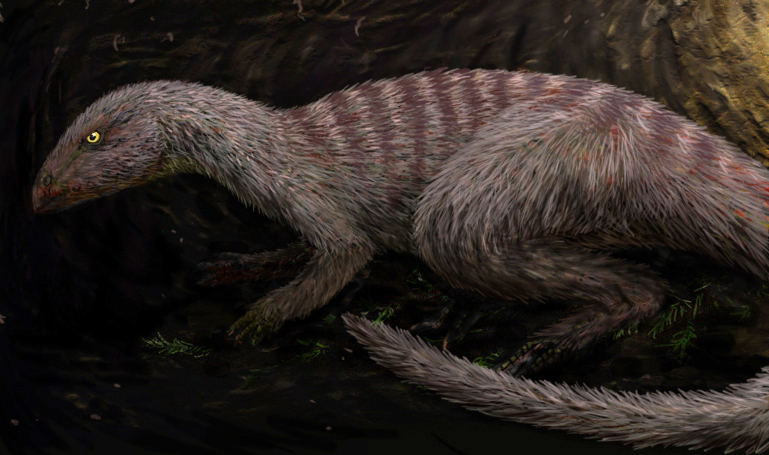|
Thescelosaurinae
Thescelosaurinae is a subfamily of thescelosaurid dinosaurs from the Early Cretaceous of Asia and the Late Cretaceous of North America. Distribution The distribution of Thescelosaurinae is quite large. They are widespread through United States and Canada where most of their fossils have been found. They also have a small group in North-Eastern China and Mongolia. Genera Studies disagree about which genera are included in the Thescelosaurinae. The group is defined to include ''Parksosaurus'' and ''Thescelosaurus'' and a cladistic analysis by C.M. Brown in 2013 concluded that the genera '' Changchunsaurus'', ''Haya'', '' Jeholosaurus'' and possibly '' Koreanosaurus'' are also thescelosaurines. Classification All thescelosaurines were originally included in the family Hypsilophodontidae, which is presently considered polyphyletic (unnatural). They are all now considered to be basal neornithischians, though more research is needed to be certain. They are the sister taxa to O ... [...More Info...] [...Related Items...] OR: [Wikipedia] [Google] [Baidu] |
Thescelosauridae
Thescelosauridae is a clade of neornithischians from the Cretaceous of Asia, North America and possibly South America. The group was originally used as a name by Charles M. Sternberg in 1937, but was not formally defined until 2013, where it was used by Brown and colleagues as the group uniting ''Thescelosaurus'' and '' Orodromeus'', based on their phylogenetic results. During a phylogenetic revision of neornithischians by Clint Boyd in 2015, the authorship of Thescelosauridae was given to Brown and colleagues, which meant that the similar name Parksosauridae, informally defined in 2002 by Buchholz, would have had priority over Thescelosauridae. The two clades had slightly different definitions, with Parksosauridae referring to all animals closer to '' Parksosaurus'' than ''Hypsilophodon'', but they contained the same taxa so Boyd used Parksosauridae under the assumption it had priority. However, in formalizing the clade following the regulations of the PhyloCode, Madzia, Boyd, a ... [...More Info...] [...Related Items...] OR: [Wikipedia] [Google] [Baidu] |
Thescelosaurus Skeleton
''Thescelosaurus'' ( ; ancient Greek - (''-'') meaning "godlike", "marvellous", or "wondrous" and (') "lizard") was a genus of small neornithischian dinosaur that appeared at the very end of the Late Cretaceous period in North America. It was a member of the last dinosaurian fauna before the Cretaceous–Paleogene extinction event around 66 million years ago. The preservation and completeness of many of its specimens indicate that it may have preferred to live near streams. This bipedal neornithischian is known from several partial skeletons and skulls that indicate it grew to between 2.5 and 4.0 meters (8.2 to 13.1 ft) in length on average. It had sturdy hind limbs, small wide hands, and a head with an elongate pointed snout. The form of the teeth and jaws suggest a primarily herbivorous animal. This genus of dinosaur is regarded as a specialized neornithischian, traditionally described as a hypsilophodont, but more recently recognized as distinct from ''Hypsilop ... [...More Info...] [...Related Items...] OR: [Wikipedia] [Google] [Baidu] |
Thescelosaurus
''Thescelosaurus'' ( ; ancient Greek - (''-'') meaning "godlike", "marvellous", or "wondrous" and (') "lizard") was a genus of small neornithischian dinosaur that appeared at the very end of the Late Cretaceous period in North America. It was a member of the last dinosaurian fauna before the Cretaceous–Paleogene extinction event around 66 million years ago. The preservation and completeness of many of its specimens indicate that it may have preferred to live near streams. This bipedal neornithischian is known from several partial skeletons and skulls that indicate it grew to between 2.5 and 4.0 meters (8.2 to 13.1 ft) in length on average. It had sturdy hind limbs, small wide hands, and a head with an elongate pointed snout. The form of the teeth and jaws suggest a primarily herbivorous animal. This genus of dinosaur is regarded as a specialized neornithischian, traditionally described as a hypsilophodont, but more recently recognized as distinct from '' Hyps ... [...More Info...] [...Related Items...] OR: [Wikipedia] [Google] [Baidu] |
Thescelosaurus Neglectus
''Thescelosaurus'' ( ; ancient Greek - (''-'') meaning "godlike", "marvellous", or "wondrous" and (') "lizard") was a genus of small neornithischian dinosaur that appeared at the very end of the Late Cretaceous period in North America. It was a member of the last dinosaurian fauna before the Cretaceous–Paleogene extinction event around 66 million years ago. The preservation and completeness of many of its specimens indicate that it may have preferred to live near streams. This bipedal neornithischian is known from several partial skeletons and skulls that indicate it grew to between 2.5 and 4.0 meters (8.2 to 13.1 ft) in length on average. It had sturdy hind limbs, small wide hands, and a head with an elongate pointed snout. The form of the teeth and jaws suggest a primarily herbivorous animal. This genus of dinosaur is regarded as a specialized neornithischian, traditionally described as a hypsilophodont, but more recently recognized as distinct from ''Hypsilo ... [...More Info...] [...Related Items...] OR: [Wikipedia] [Google] [Baidu] |
Orodrominae
Orodrominae is a subfamily of thescelosaurid dinosaurs known from the Cretaceous of North America and Asia. Distribution Orodromines were a mostly North American based group with fossils from Canada and United States only. '' Albertadromeus'', as its name suggests, is only from the upper (later) part of the Oldman Formation in the Belly River Group of Alberta, Canada. ''Orodromeus'', the type genus, was widespread through Montana. Its holotype was found at the Egg Mountain in the Two Medicine Formation. '' Oryctodromeus'' fossils were found in the Lima Peaks section of the Blackleaf Formation, also from Montana. ''Zephyrosaurus'', the most widespread genus, lived in southern Montana and northern Wyoming. The locality of its holotype is the Wolf Creek Canyon, which is a sandstone in the Cloverly Formation. Age Orodromines are widespread throughout time, starting in the Aptian and ending in the Campanian. The earliest fossils are of ''Zephyrosaurus'' and are from the Aptian ( ... [...More Info...] [...Related Items...] OR: [Wikipedia] [Google] [Baidu] |
Albertadromeus
''Albertadromeus'' is an extinct genus of orodromine thescelosaurid dinosaur known from the upper part of the Late Cretaceous Oldman Formation (middle Campanian stage) of Alberta, Canada. It contains a single species, ''Albertadromeus syntarsus''. Etymology The composite term ''Albertadromeus'' is derived from the name of the Canadian province "Alberta", and the Greek word ''dromeus'' (δρομεύς) meaning "runner", a reference to its inferred cursorial nature; thus "runner from Alberta". The specific name, ''syntarsus'' is derived from Greek words "syn" (συν) meaning "together" and "tarsus" (ταρσός) meaning "ankle", hence "together-ankle" a reference to the condition where its distal fibula is fused to its distal tibia. This dinosaur was described and named by Caleb Marshall Brown, David C. Evans, Michael J. Ryan & Anthony P. Russell in 2013 and the type species is ''Albertadromeus syntarsus''. Description The holotype specimen of ''Albertadromeus'' TMP 2009.037 ... [...More Info...] [...Related Items...] OR: [Wikipedia] [Google] [Baidu] |
Dinosaur
Dinosaurs are a diverse group of reptiles of the clade Dinosauria. They first appeared during the Triassic period, between 243 and 233.23 million years ago (mya), although the exact origin and timing of the evolution of dinosaurs is the subject of active research. They became the dominant terrestrial vertebrates after the Triassic–Jurassic extinction event 201.3 mya; their dominance continued throughout the Jurassic and Cretaceous periods. The fossil record shows that birds are feathered dinosaurs, having evolved from earlier theropods during the Late Jurassic epoch, and are the only dinosaur lineage known to have survived the Cretaceous–Paleogene extinction event approximately 66 mya. Dinosaurs can therefore be divided into avian dinosaurs—birds—and the extinct non-avian dinosaurs, which are all dinosaurs other than birds. Dinosaurs are varied from taxonomic, morphological and ecological standpoints. Birds, at over 10,700 living species ... [...More Info...] [...Related Items...] OR: [Wikipedia] [Google] [Baidu] |
Parksosaurus
''Parksosaurus'' (meaning " William Parks's lizard") is a genus of neornithischian dinosaur from the early Maastrichtian-age Upper Cretaceous Horseshoe Canyon Formation of Alberta, Canada. It is based on most of a partially articulated skeleton and partial skull, showing it to have been a small, bipedal, herbivorous dinosaur. It is one of the few described non-hadrosaurid ornithopods from the end of the Cretaceous in North America, existing around 70 million years ago. Description Explicit estimates of the entire size of the animal are rare; in 2010 Gregory S. Paul estimated the length at 2.5 meters, the weight at forty-five kilograms.Paul, G.S., 2010, ''The Princeton Field Guide to Dinosaurs'', Princeton University Press p. 277 William Parks found the hindlimb of his ''T. warreni'' to be about the same length overall as that of ''Thescelosaurus neglectus'' (93.0 centimeters (3.05 ft) for ''T. warreni'' versus 95.5 centimeters (3.13 ft) for ''T. negle ... [...More Info...] [...Related Items...] OR: [Wikipedia] [Google] [Baidu] |
Nevadadromeus
''Nevadadromeus'' (meaning "Nevada runner") is an extinct genus of small thescelosaurine ornithischian dinosaur, from the Willow Tank Formation of Nevada, United States. The genus contains a single species, ''N. schmitti'', which represents the first non-avian dinosaur named from Nevada. Discovery and naming The ''Nevadadromeus'' holotype specimen, NSC 2008-002 was discovered near the Valley of Fire in 2008 and the bones were prepared for an event in Henderson, Nevada in 2021. A second ornithopod from Nevada, a hadrosaur, was also leaked during the event, but it is was not ready for public view until 2022. ''Nevadadromeus'' was formally published in October 2022. In 2022, Bonde ''et al''. described ''Nevadadromeus'' as a new genus and species of thescelosaurine. The generic name, "''Nevadadromeus''", combines a reference to the Nevada, the state the holotype was discovered in, with the Greek "dromeus", meaning "runner". The specific name Specific name may refer to: * in Databas ... [...More Info...] [...Related Items...] OR: [Wikipedia] [Google] [Baidu] |
Orodromeus
''Orodromeus'' (meaning "Mountain Runner") is a genus of herbivorous orodromine thescelosaurid dinosaur from the Late Cretaceous of North America. Only one species is known, the type species ''Orodromeus makelai''. Discovery and naming The remains of ''Orodromeus'' were discovered by Robert Makela during the excavation in Teton County, Montana, of the ''Egg Mountain'' brooding colony of a much larger relative, ''Maiasaura''. The type species, ''Orodromeus makelai'', was named and shortly described by Jack Horner and David B. Weishampel in 1988. The generic name is derived from Greek ὄρος, ''oros'', "mountain", in reference to the Egg Mountain site, and δρομεύς, ''dromeus'', "runner", referring to the cursorial habits of the animal. The specific name honoured the late Makela.Horner, J. and Weishampel, D., 1988, "A comparative embryological study of two ornithischian dinosaurs", ''Nature'' (London), 332(No. 6161): 256-257 (1988) The holotype specimen, MOR 294, w ... [...More Info...] [...Related Items...] OR: [Wikipedia] [Google] [Baidu] |
Haya (dinosaur)
''Haya'' is an extinct genus of basal neornithischian dinosaur known from Mongolia. Description ''Haya'' is known from several well-preserved specimens which collected in the Khugenetslavkant locality by the joint Mongolian Academy of Sciences from 2002 to 2007, from the Javkhlant Formation and a few from the Zos Canyon locality of the Gobi Desert. Both localities probably date to the Santonian-Campanian stages of the Late Cretaceous. The holotype IGM 100/2017 is composed of a complete and well preserved skull with some postcranial elements associated to it. Referred materials include IGM 100/1324, isolated left femur, IGM 100/2013, postcranial elements, IGM 100/2014, a crushed skull and postcranial elements, IGM 100/2015, a nearly complete postcranial skeleton, IGM 100/2016, a partial juvenile skull, IGM 100/2018, an isolated mandible with some teeth, IGM 100/2019, a nearly complete skull and skeleton and IGM 100/2020, postcranial f ... [...More Info...] [...Related Items...] OR: [Wikipedia] [Google] [Baidu] |






